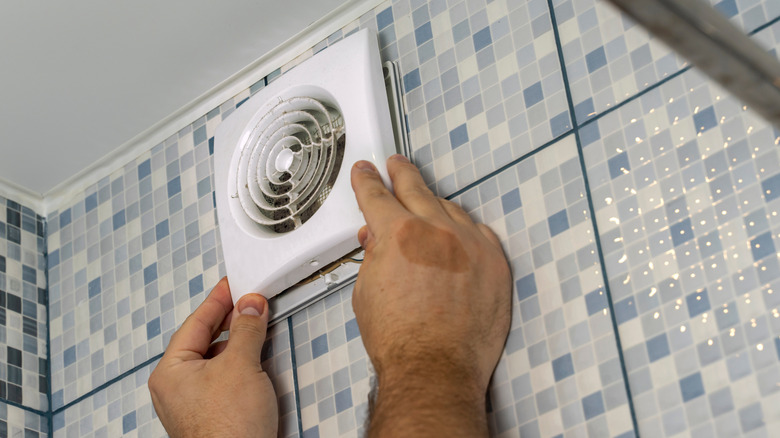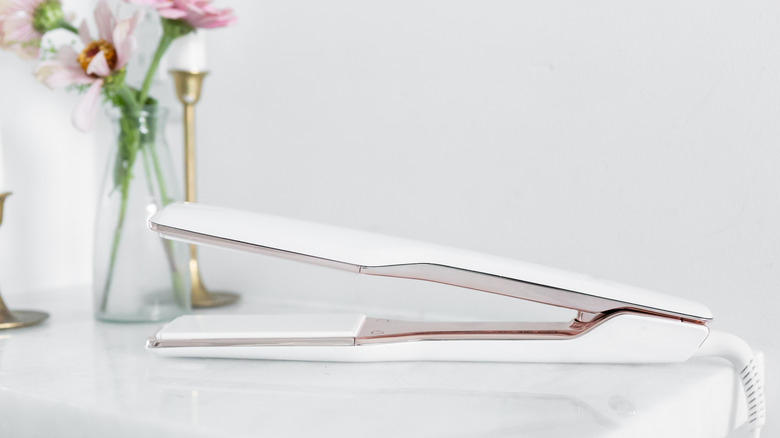Prevent The Risk Of A Bathroom Fire With These Crucial Maintenance Tips
What fire risks do you associate with your bathroom? Sure, you could cause a fire with a candle that gets too close to your shower curtain or wall. Curling irons and other heat-styling tools can also overheat or touch flammable materials. Even outdated, non-GFCI outlets could increase your fire risk. But you might not suspect a common appliance found in many bathrooms: exhaust fans. Despite the benefits of a bathroom exhaust fan, the seemingly innocuous appliance could put your home at risk. Dirt buildup, excessive use, old age, and overheating could cause a bathroom fire. Routine maintenance and proper use lower the risk.
Your bathroom exhaust fan is an electric appliance that can overheat or malfunction. That often happens if you don't take care of the fan or when it gets older and doesn't function properly anymore. Running the fan for extended periods of time can also increase the risk of overheating. When the fan malfunctions, the motor may seize and stop the fan from spinning, which could cause the fan to draw 10 times the normal electrical current to it. You would think the increase would cause the breaker to shut down the circuit, but exhaust fans don't draw a large electrical current to start. Even with it increasing the current significantly, it's not enough to make the breaker trip. But it is enough to overheat the exhaust fan and potentially ignite any flammable materials nearby like the dust and lint that collects on it.
Maintaining your bathroom exhaust fan
Keeping your exhaust fan clean and well-maintained could cut down on the risk of fires. Getting rid of the buildup helps the fan work efficiently and move freely. It also removes the highly combustible dirt and lint that accumulates on the fan. Having the fan cover off to clean also gives you a good look at the wiring and components inside to check for signs of overheating, such as discolored wiring.
To clean your exhaust fan, shut off the power source first to keep yourself safe. Then, pull off the cover from the exhaust fan. Fan covers often have spring-loaded clips or tabs that hold them in place. You usually need to pull the cover down partially and then pinch or squeeze the tabs to release the cover fully. Wash the cover with warm, soapy water to remove the dirt. Rinse the cover well and dry it completely before putting it back on the fan.
It's also important to clean the inside of the fan. A brush attachment on your vacuum cleaner works well for removing dust inside the fan, or use compressed air to blow the dust and debris out of the fan. You can also wipe down the fan body with a damp cleaning cloth. Make sure everything is dry before reassembling the fan. Cleaning your bathroom vent at least once a year is a must, but cleaning it every 6 months (or even more frequently) is ideal.
Replacing an older exhaust fan
Like other electric appliances, exhaust fans can become more dangerous as they get older. The wiring can become worn, which increases the risk of overheating. Aging could cause other parts, like the bearings in the motor, to wear out, which can cause the motor to fail and overheat. An exhaust fan that gets used frequently or left on for long periods could wear out faster because of how much it runs. Older fans could also have more lint and dirt built up inside them, especially if you don't clean them regularly, which creates more combustible material to ignite should the appliance overheat.
Newer exhaust fans have safety features, such as thermal protection. Models with thermal overload switches cut power to the fan and to shut down the motor if they overheat. Older units don't have those features, which could increase the risk of overheating. This could cause a fire by igniting surrounding materials in the wall or ceiling. Fans made before the early '90s may not have thermal protection.
Replacing an older exhaust fan eliminates that wear and tear that has developed over the years and gives you a model with more safety features. Install a new bathroom exhaust fan if your fan is an older unit or it shows signs of issues, such as scraping sounds, visible melting, or burning odors. Strange noises, especially when you start the fan, could mean it's rubbing against something, which could cause the blades to stop rotating completely. Burning smells could be a sign that the fan is overheating and the wiring is melting.
Other ways to reduce the risk of bathroom fires
Leaving appliances unattended in your bathroom could lead to a fire. That includes your exhaust fan. Only run it for a short time when you shower. If it overheats when you're not around, it's more likely to spark and catch. You can add a timer switch, so the fan turns off automatically. You should also shut off your heat styling tools before you leave the bathroom. If your heat tools stay on indefinitely, it's a good idea to replace them with newer models that shut off automatically.
Some heat-generating items should stay out of your bathroom. Skip space heaters in your bathroom — not only do they present an electrocution risk with so much water around, but they could also start a fire if your bath mat, towels, clothes, or other combustible materials get too close. The same goes for real candles with open flames, which present a serious fire hazard. The U.S. Fire Administration recommends against using candles in bathrooms as well as your bedrooms. Battery-operated candles offer a convincing replacement to create the same ambiance.
Installing and regularly testing GFCI outlets in your bathroom also lowers your fire risks in addition to preventing shocks and electrocution. If your bathroom circuits become overloaded or there's an issue with the wiring, the GFCI receptacle shuts off the power supply to prevent overheating. Even if a fire starts, the outlet could keep it from getting worse by stopping the electrical current.



